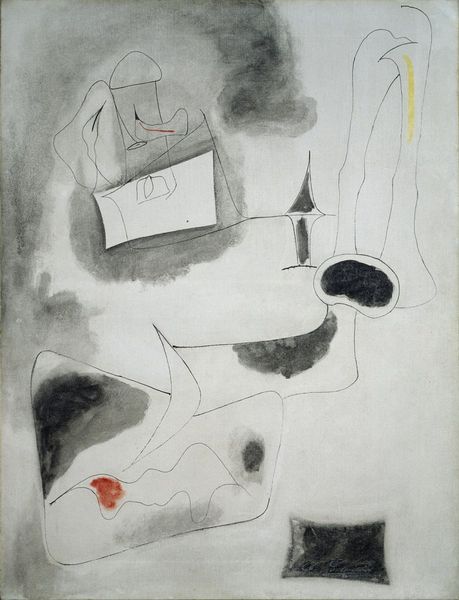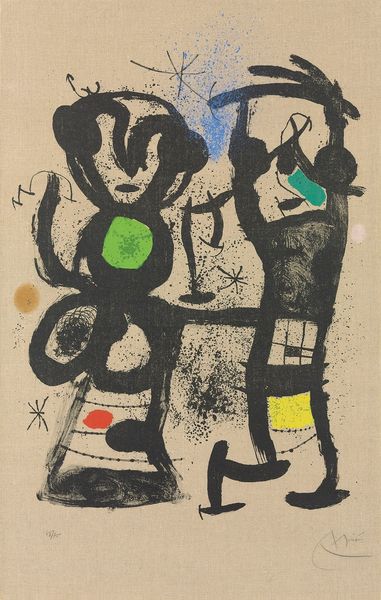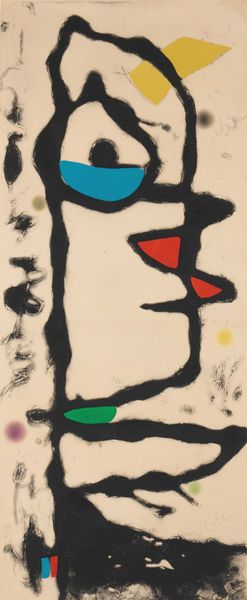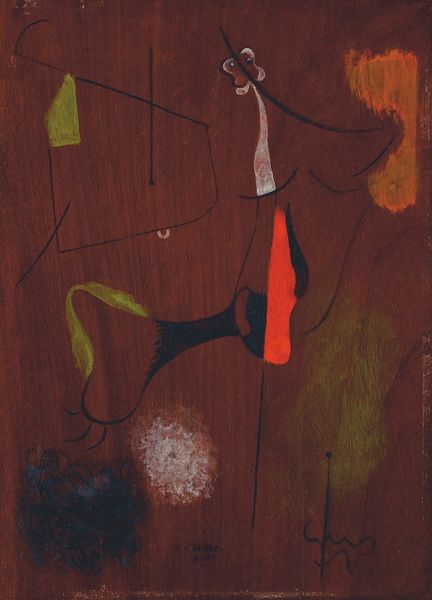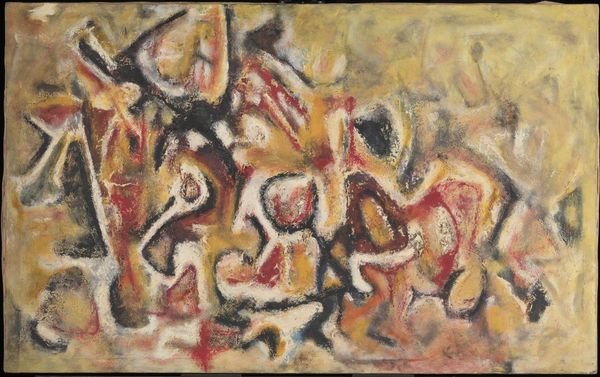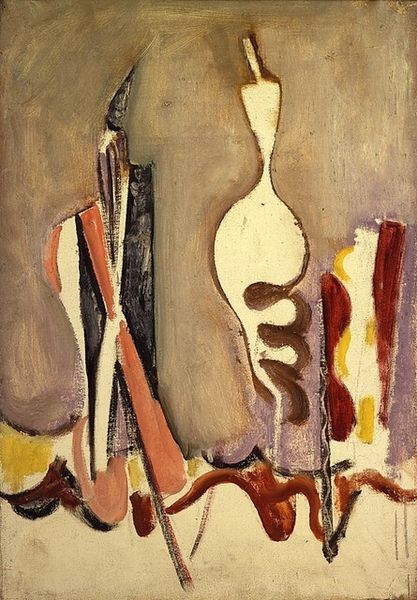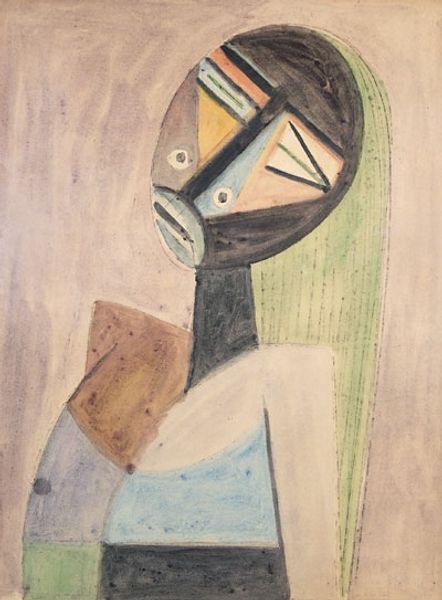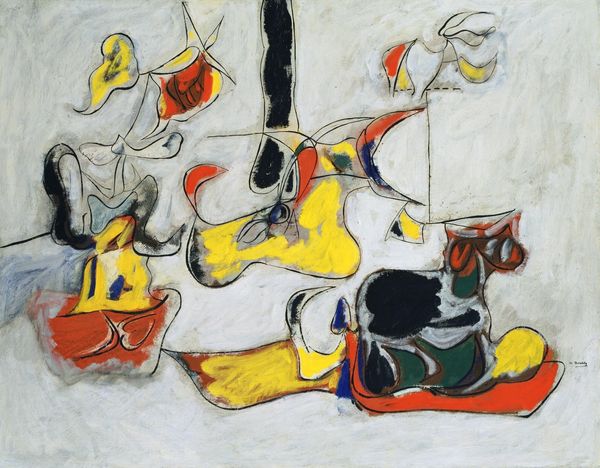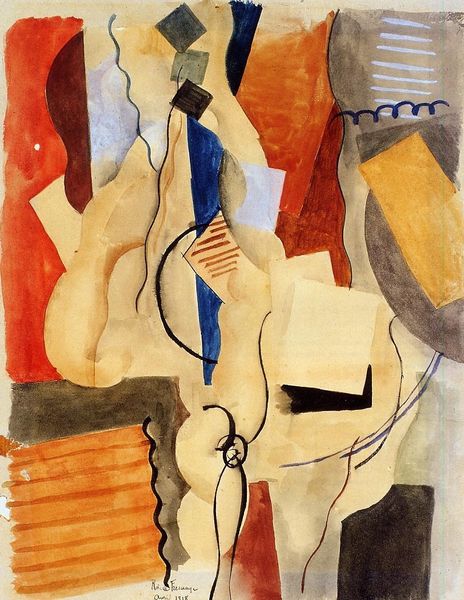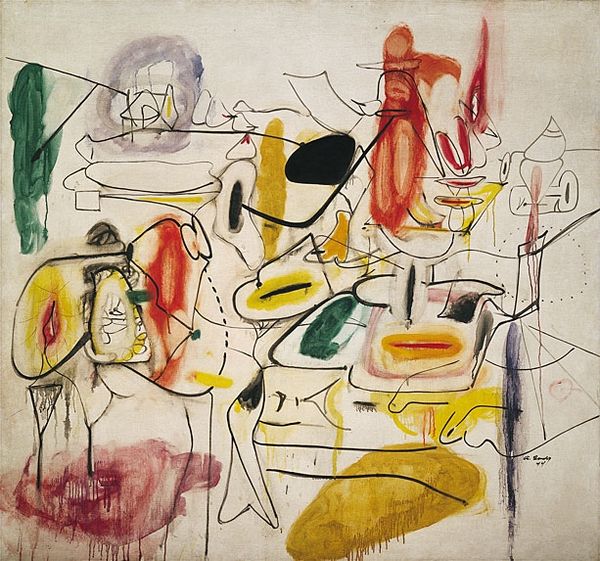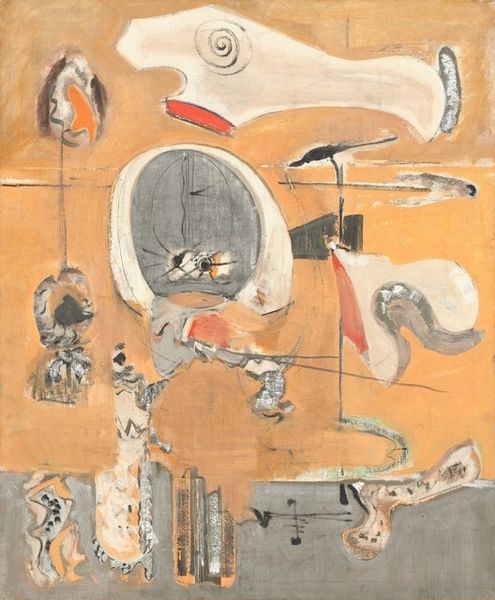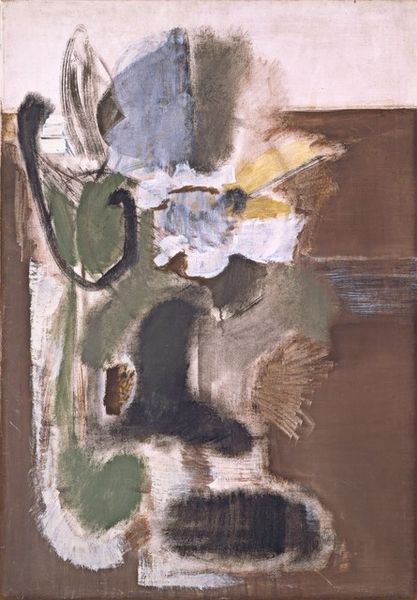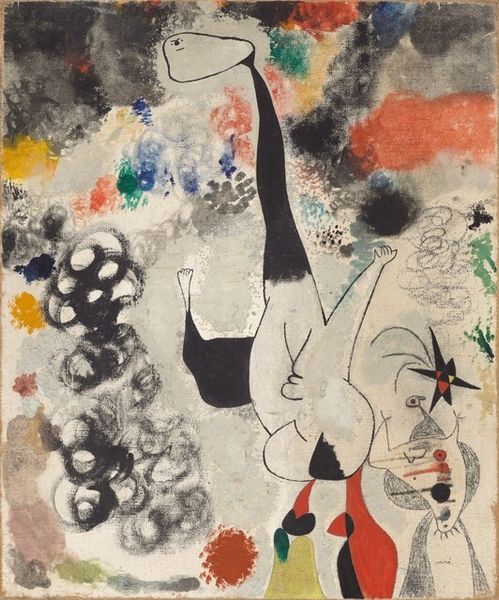
painting, oil-paint
#
portrait
#
abstract-expressionism
#
abstract painting
#
painting
#
oil-paint
#
form
#
oil painting
#
abstraction
#
line
#
portrait drawing
#
portrait art
#
modernism
#
watercolor
Copyright: Public domain
Curator: This is "The Observer" by Arshile Gorky, an oil on canvas that typifies his move towards abstract expressionism. It’s undated, but likely hails from the mid-1940s. What do you make of it initially? Editor: My first impression is unease, a sense of suspended animation. The forms seem caught mid-transformation. It reminds me of peering into someone's subconscious—fleeting, ambiguous. Curator: Absolutely, the subconscious is a good entry point. Gorky often channeled personal experiences and Armenian cultural memory into his work, using abstraction to convey raw emotion and layered identities. Notice how the floating shapes seem both familiar and utterly alien. The forms are constantly shifting, hard to define, as if reflecting the unstable conditions around the interwar period. Editor: I see that tension between representation and pure form. Is that face I see lurking behind the line, in the top-left corner of the painting? I see, in those shapes, allusions to figures, to landscape, but nothing is concrete. The lines act as scaffolding, or perhaps cages. I’m struck by the painting's tonal range too— the way it utilizes muted yellows, umbers, against intense areas of black. What does the 'Observer' observe here, would you say? Curator: I think it’s about the act of witnessing—the self watching itself, perhaps the artist grappling with identity. The fragmented forms reflect the psychological complexity of selfhood. The splashes of black suggest a deep psychological plunge for the artist at this period in his life, after facing intense social struggles. Also, I find it so fascinating to observe Gorky’s modernist technique. In this piece, Gorky seems to be channeling his interest in linear qualities of works like Ingres’ drawings into surrealist explorations, like this painting! Editor: So the painting functions, in that light, as a sort of cultural artifact too. The work encapsulates anxieties surrounding questions of belonging, trauma and the pressures to evolve amidst rapidly changing contexts, but it does so through visual symbols that seem plucked from a collective unconscious. That’s powerful, a blend of personal and public history. Curator: Exactly. Its enduring quality stems from that very synthesis, its ability to probe personal and universal human experiences simultaneously. Editor: A work of evocative power, certainly something that lingers with you. I appreciate this walk-through!
Comments
No comments
Be the first to comment and join the conversation on the ultimate creative platform.
